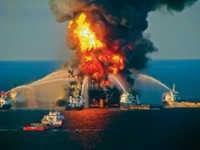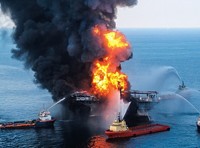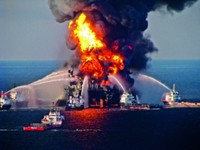Advertisement
Grab your lab coat. Let's get started
Welcome!
Welcome!
Create an account below to get 6 C&EN articles per month, receive newsletters and more - all free.
It seems this is your first time logging in online. Please enter the following information to continue.
As an ACS member you automatically get access to this site. All we need is few more details to create your reading experience.
Not you? Sign in with a different account.
Not you? Sign in with a different account.
ERROR 1
ERROR 1
ERROR 2
ERROR 2
ERROR 2
ERROR 2
ERROR 2
Password and Confirm password must match.
If you have an ACS member number, please enter it here so we can link this account to your membership. (optional)
ERROR 2
ACS values your privacy. By submitting your information, you are gaining access to C&EN and subscribing to our weekly newsletter. We use the information you provide to make your reading experience better, and we will never sell your data to third party members.
Safety
Chemical Safety Board Releases Draft Report On BP Deepwater Horizon Rig Accident
Chemical safety board finds corporate focus on personal accidents ignored impending oil rig disaster
by Jeff Johnson
August 6, 2012
| A version of this story appeared in
Volume 90, Issue 32

Systemic failures, personal and institutional hubris, and missed signs of potentially dangerous conditions led to the U.S.’s most deadly offshore oil rig accident and the nation’s worst offshore oil spill, says the Chemical Safety & Hazard Investigation Board (CSB) in a draft report released in late July.
At a two-day hearing in Houston on July 23–24, CSB delivered preliminary results of a nearly two-year investigation of the April 20, 2010, accident. The BP Deepwater Horizon oil rig explosion and Macondo well blowout killed 11 workers and released some 5 million gal of oil into the Gulf of Mexico.
CSB’s draft report finds a culture and history in which well owner BP, drilling-rig owner and operator Transocean, and a host of contractors focused on traditional personal injury incidents—slips, falls, dropped tools—but ignored other signs of far more lethal problems. Although signs of potentially larger accidents are harder to detect than personal injuries, CSB notes in its report, they provide a much better indicator of situations that are more dangerous.
Similarly, the report says regulatory and oversight programs of the Department of the Interior and the American Petroleum Institute (API), an oil industry trade association, also failed to use what CSB termed “leading indicators” that could be predictive and help to head off future accidents.
The board began its investigation when asked to do so by members of Congress in the summer after the accident. CSB was called on because of its experience investigating other chemically related industrial accidents, in particular several involving BP.
Most visible among those investigations was the 2005 BP Texas City, Texas, refinery accident that killed 15 workers and injured 180 more. The investigation into that accident vaulted CSB into a national debate over worker safety and industrial precautions.
The BP refinery accident and BP’s oil rig disaster bear an “eerie resemblance” to one another, said CSB investigator Cheryl MacKenzie at the Houston hearing.
At the BP Texas City refinery, she said, contract workers had just returned to temporary trailers at the plant after attending a celebratory lunch commending them for an excellent personal injury accident record. Shortly after lunch, the deadly explosion occurred during process start-up.
At the Macondo well, officials with BP and rig owner and operator Transocean were lauding operators and workers for their low rate of personal injuries on the very day of that tragedy. Company VIPs had flown to the rig in part to recognize the workforce for zero lost-time incidents.
“The emphasis on personal injury and lost work-time data,” MacKenzie said, “obscures the bigger picture—that companies need to develop indicators that give them realistic information about their potential for catastrophic accidents. How safety is measured and managed is at the very core of accident prevention. If companies are not measuring safety performance effectively and using those data to continuously improve, they will likely be left in the dark about their safety risks.”
CSB officials, however, did not specifically select leading indicators that they would like companies to use, said investigator Kelly Wilson. It was left to companies to explore and determine what works best for them. But the report gives some examples for offshore operations, such as hydrocarbon leaks or “kicks” that can occur during drilling operations and could signal an impending blowout. Also, the report says indicators could include increased frequency of inspections as well as near misses that could have resulted in accidents but were caught through safety equipment.
The failure of companies to accurately take note and respond to conditions that may lead to serious accidents is a familiar refrain in CSB reports. By examining the ineffective indicators of potential dangers, company officials and workers become overconfident and incautious.
“Furthermore,” added CSB Chairperson Rafael Moure-Eraso, “we have found failures by companies to implement their own recommendations from previous accidents involving, for example, leaks of flammable materials.”
For instance, according to the draft report, Transocean experienced a series of events in the North Sea in 2009 that were similar to what led to the Deepwater rig explosion in the Gulf. In the North Sea, however, safety equipment worked and the accident was avoided. But the company failed to report the incident and conditions to Transocean employees working outside the North Sea.
Additionally, BP operators experienced a delay in responding to a hydrocarbon kick when boring a hole about a month before the accident occurred. Despite the delay, BP and Transocean did not implement changes to hasten a response to such delays, according to CSB.
The Deepwater accident occurred after drilling was complete and the companies were attempting to secure the well and remove all equipment above the wellhead, investigator Wilson noted.
A key operation was the installation of a cement barrier at the bottom of the well to seal off the hydrocarbon production zone. However, in this case, a pressure test of the cement job was misinterpreted, and the crew failed to realize the well was not sealed.
The crew conducted the pressure test multiple times in multiple ways, according to CSB. The test failed each time and eventually one of the crew proposed a novel, incorrect theory about why the test results appeared as they did. Ultimately, the other members of the crew were persuaded to accept this explanation. The test was declared a success. Soon thereafter the rig exploded.
CSB found no written criteria to test the cementing job, nor were there written instructions on seeking engineering authority if problems were found. This lack of documented procedure led to the confusion experienced on the Deepwater rig. And this problem is industrywide, according to CSB, because no standards or guidelines address this critical safety procedure and the test was not required by U.S. regulators.
Unlike other high-level investigations, such as the presidentially appointed National Commission on the BP Deepwater Horizon Oil Spill & Offshore Drilling, CSB’s investigation is centering on procedural worker safety processes. The two investigation reports intersect, however, particularly concerning the need for an overhaul of rig regulations in U.S. waters. The commission noted the fatality rate per accident is five times higher in U.S. waters than it is in the North Sea (C&EN, Jan. 24, 2011, page 24).
On a more positive note, Moure-Eraso said BP had informed CSB recently that it is working to develop an offshore indicators program, and API has taken “a positive step forward” to improve safety indicators.
CSB is examining additional issues that it plans to analyze further in its full investigation report, which is to be released later this year or early next. These include technical problems that led to the failure of the undersea blowout preventer, regulatory reports, changes in corporate structure, and issues specific to the workforce.





Join the conversation
Contact the reporter
Submit a Letter to the Editor for publication
Engage with us on Twitter